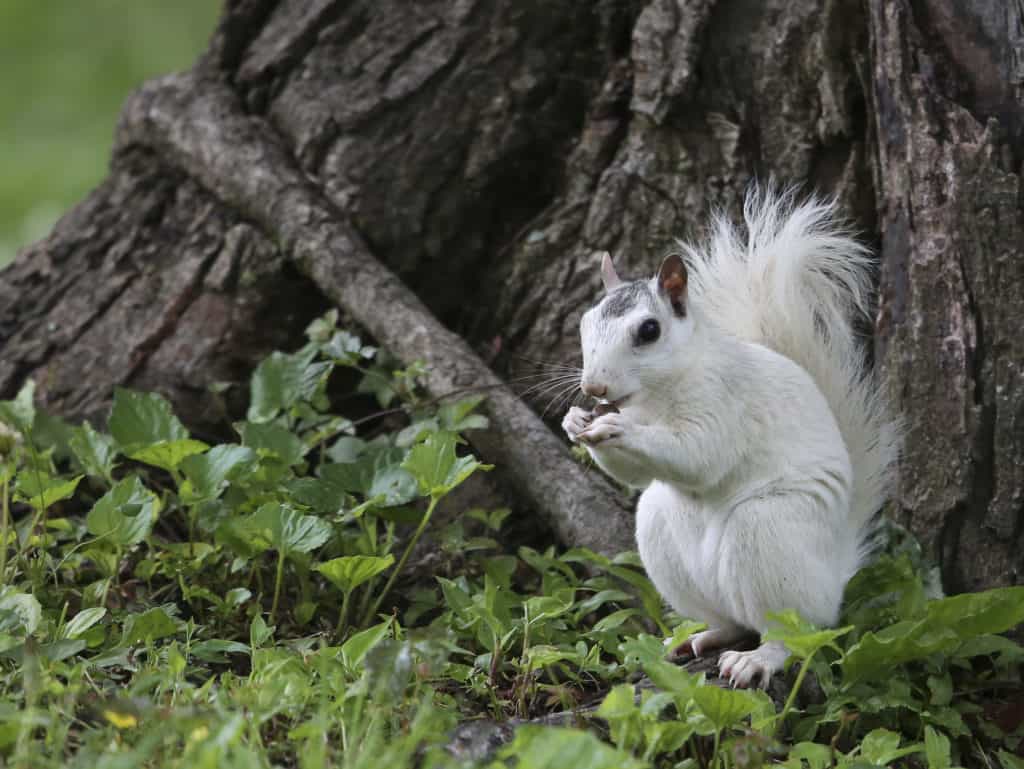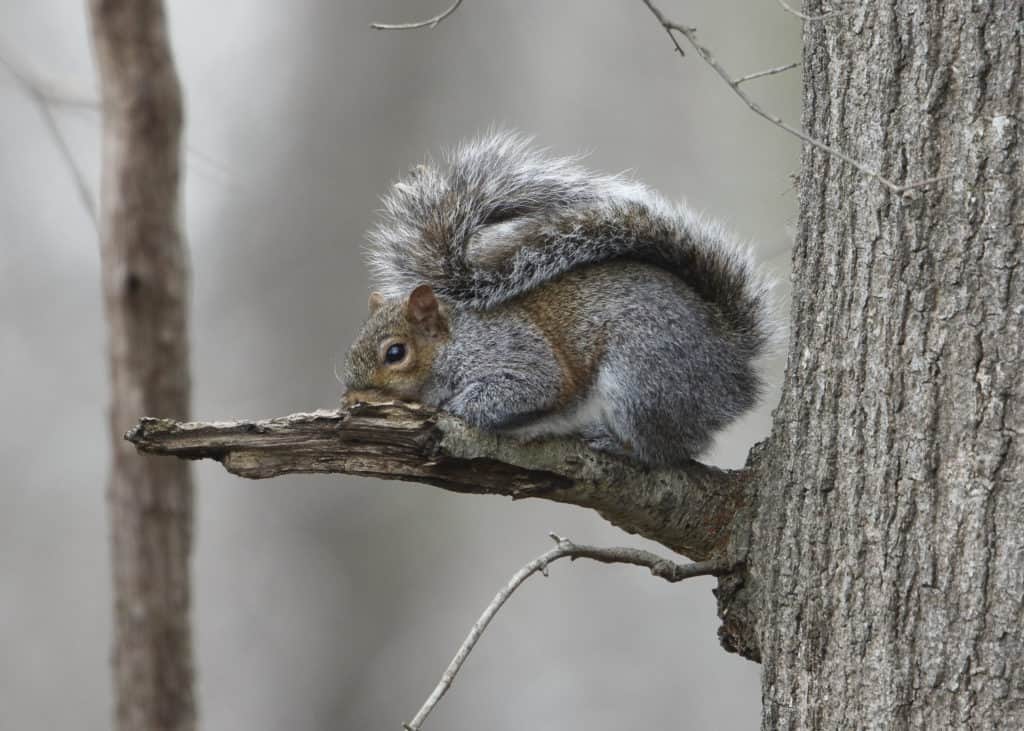Creature Feature
The Eastern Gray Squirrel: Friend or Foe?
By Wayne Bierbaum
I have an ongoing competitive relationship with the squirrels in my yard. Today I went to pick some yellow squash and found all of them had been taste-tested by squirrels. The hot pepper-treated sunflower seeds have stopped deflecting them and they have decided they like the bluebirds’ food. When I went on vacation last year, they tried to get into a screened porch through the screens. Luckily, they have not tried to get into the attic.
The eastern gray squirrel (Sciurus carolinensis) is slowly expanding its range, thanks to their intelligence, fecundity and adaptability. As they spread west, they are displacing the western fox squirrel and the red squirrel. On the Eastern Shore of Maryland, they compete with the Delmarva fox squirrel. Even though they have many predators, their numbers increase to match predation. They have two litters of up to four young a year. They reach independence and sexual maturity at a year old.
The rodents have a long tail that acts as an umbrella, blanket, balance bar and a chair. They come in several color variations from nearly all white to all black. Silver Spring has a large population of black morph squirrels. Centerville has a cluster of white morph squirrels. They have 22 teeth and their four front incisors continuously grow, requiring frequent gnawing to wear them down. Without that continuous gnawing, the teeth will grow to the point of locking their jaw. They do not hibernate but make large leaf and fur-lined nests that are usually high in a tree but they can also use tree hollows and the eaves of houses.
Getting them out of your eaves, gardens and bird food can be quite difficult. The easiest way to discourage them is to stop feeding them—no garden and no bird feeding. Noise makers, repellent smells and baffles on feeders can help, or just encourage the squirrels to be more creative.



